The third edition of Asia’s first and only sustainable light art festival adopts a light-hearted, yet thought-provoking approach towards a sombre issue. Lynn Tan files this report.

March 11th, 2014
Top image: 1.26 Singapore by Janet Echelman. Photo © Urban Redevelopment Authority of Singapore
From 7 to 30 March, the Marina Bay area will be transformed into the largest public art gallery in Singapore. This year’s edition of the biennial festival showcases 28 light art installations created by local and international artists across different creative disciplines.
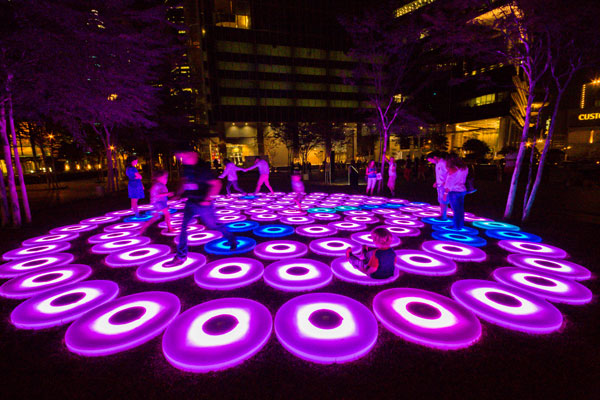
The Pool by Jen Lewin. Photo © Urban Redevelopment Authority of Singapore
Curated by Ong&Ong, these works revolve around this year’s theme of Light+HeART, which aims to convey the message that “in the heart of sustainability matters, is the matter of the heart”. To that end, the festival seeks to increase environmental awareness, widen the public’s perspective towards sustainability issues and hopefully perpetuate a change in attitude.
The installations are grouped into four categories.
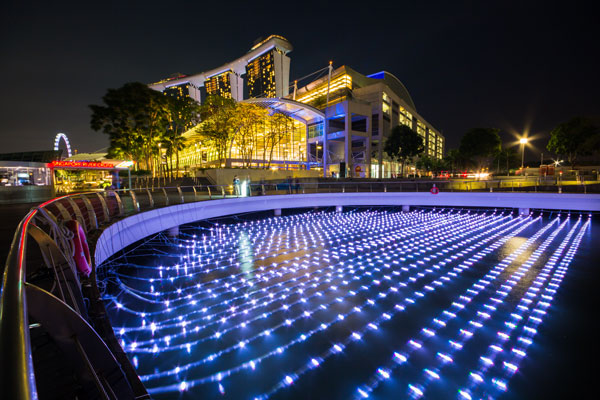
iSwarm by Singapore University of Technology and Design. Photo © Urban Redevelopment Authority of Singapore
“Interactivity through Collaborations” comprises works that demonstrate the creative use of technology to provoke an emotive awareness towards one’s self and one’s environment. One such work is “iSwarm”. It is presented by the team from the Singapore University of Technology and Design (SUTD) who are participating for the first time; this is also the first time in the three editions of i Light that an installation actually engages the water. 1,500 individually-controlled lights are put together to look like a swarm of luminous ‘sea creatures’ that interact with passers-by. “It is technology behaving like a living creature,” says Professor Thomas Schroepfer, who leads the team.

Mimosa by Jason Bruges. Photo © Jason Bruges
“Mimosa” by British artist Jason Bruges is another interactive work, this time displaying behavior that mimics responsive plant systems, just like the mimosa plant. 2mm thick organic light-emitting diodes (OLED) open and close, as if they are dancing in response to visitors’ hand movements.

Cloud by Caitlind r.c. Brown and Wayne Garrett. Photo © Doug Wong
In the category “Collective is Strength”, community- and social-oriented works encourage audience involvement. Canadian duo Caitlind r.c. Brown and Wayne Garrett’s “CLOUD” combines old and new technology in the form of incandescent and energy-efficient bulbs put together in the form a cloud. Audiences can come together under the cloud and trigger changes by pulling on dangling cords, symbolising the breaking down of barriers.
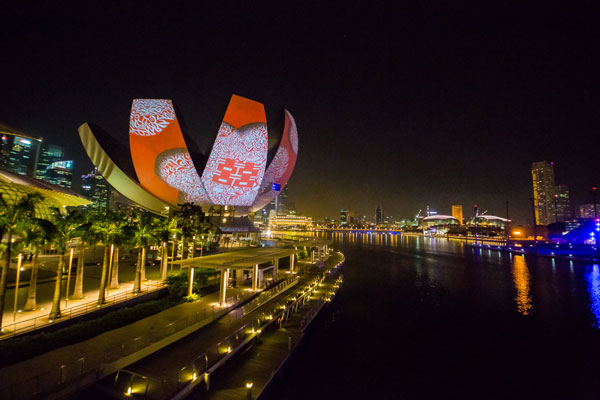
Celebration of Life by Justin Lee and Dorier Asia. Photo © Urban Redevelopment Authority of Singapore
“Sustaining Future Local Talents” features local emerging artists who are participating in i Light Marina Bay for the first time. The centrepiece is “Celebration of Life”, created by local artist Justin Lee. It is a 3D projection on the facade of the ArtScience Museum. Lee uses digitised motifs from his past works, blending traditional Eastern iconography with modern-day symbols to suggest cultural resilience. It is not only Lee’s first time presenting at i Light Marina Bay, but it is also the first time he is working with such a medium and on so large a scale. “I have always wanted to extend my art practice to a different level. This is a great challenge but I also learnt a lot,” reflects Lee. The artist also considers i Light Marina Bay “an excellent way for local artists to showcase their works to different groups of audiences.” He says, “Art is not just a piece of work sitting in a museum but it actually reaches out to the public.”
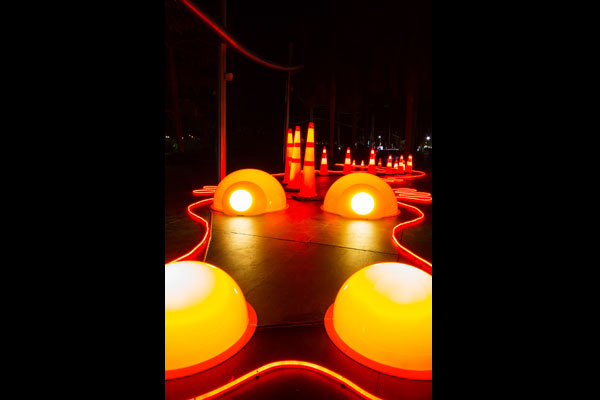 Happy Croco by Bibi. Photo © Urban Redevelopment Authority of Singapore
Happy Croco by Bibi. Photo © Urban Redevelopment Authority of Singapore
The fourth and last category, “Questioning Different Dimensions of Nature through our Hearts”, is inspired by nature. A particularly thought-provoking installation here, titled “1.26 Singapore” by American artist Janet Echelman, is inspired by the traditional craftsmanship of fish net weaving and lace making. It is translated into an urban sculpture that takes a volumetric form modeled after the tsunami that resulted from the earthquake in Chile, which shortened the earth’s day by 1.26 microseconds. The work is made of Honeywell Spectra fibre, a material that is 15 times stronger than steel by weight. The light images that are projected onto the fibre give it a holographic quality as it sways gently in the breeze.
“Happy Croco” by French artist Bibi is a 20-metre long sculpture of a crocodile made out of plastic cones and everyday discarded items. Bibi regards plastic as “the sixth element” and says that “plastic in itself is not a pollutant; it is how we use it.”

Guardian Angels by Maro Avrabou and Dimitri Xenakis. Photo © Urban Redevelopment Authority of Singapore
The installations are spread out around the Marina Bay area and visitors can choose to make their way around on foot to explore the installations up-close, or take in the stunning view from river taxis. Either way, the experience is equally magical.
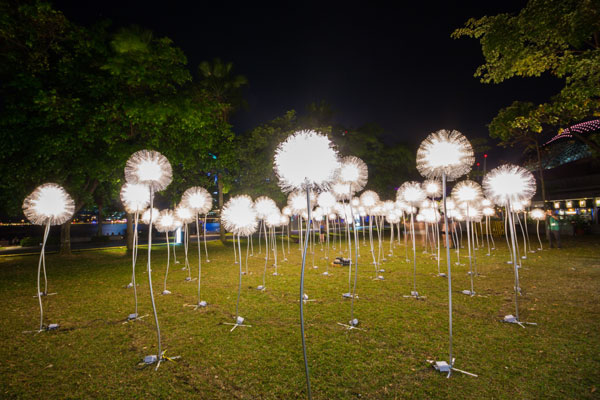
Giant Dandelions by Olivia d’Aboville. Photo © Urban Redevelopment Authority of Singapore
Besides the installations, i Light Marina Bay also has a host of complementary activities that the public can participate in, such as performances, guided tours, culinary offerings, workshops, clinics and flea markets.
INDESIGN is on instagram
Follow @indesignlive
A searchable and comprehensive guide for specifying leading products and their suppliers
Keep up to date with the latest and greatest from our industry BFF's!
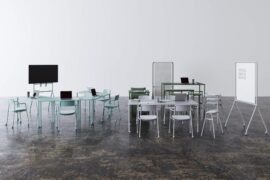
Welcomed to the Australian design scene in 2024, Kokuyo is set to redefine collaboration, bringing its unique blend of colour and function to individuals and corporations, designed to be used Any Way!
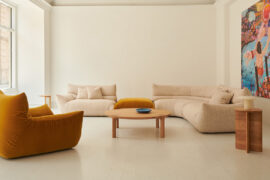
A curated exhibition in Frederiksstaden captures the spirit of Australian design
The internet never sleeps! Here's the stuff you might have missed
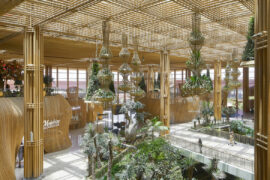
Winner of the INDE.Awards 2025 Best of the Best, Terminal 2 Kempegowda International Airport Interiors by Enter Projects Asia and SOM showcases 12,000-square-metres of biophilic design, featuring nine kilometres of handwoven rattan in a sustainable, world-class passenger experience.

The Melbourne-based interior designer is celebrating his eponymous practice’s quarter-century. He joins Timothy Alouani-Roby at The Commons during a flying visit to Sydney to discuss this milestone and much more.